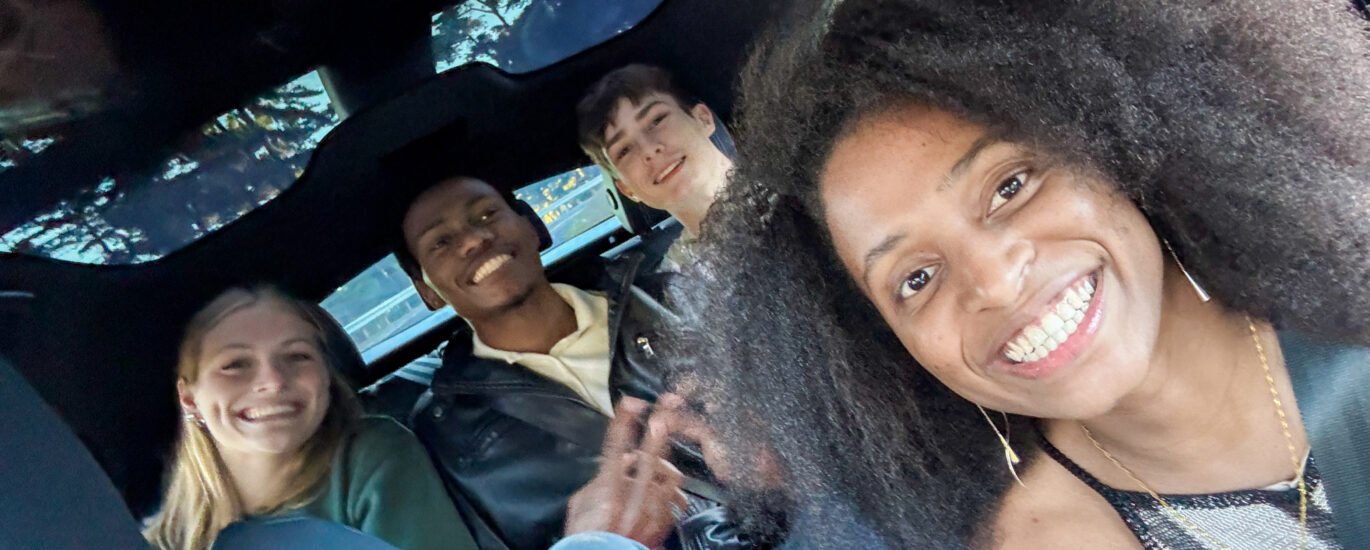


San Francisco has a way of making you feel like the future is within arm’s reach. Between the sharp Bay breeze and the buzz of ideas at TechCrunch Disrupt 2025, innovation almost feels tangible — alive. On our first day, after hours of conversations about AI, automation, and the next frontier of tech, we decided to do something simple: take a Waymo RoboTaxi to see the Golden Gate Bridge.
It sounded like just another ride across the city. But as the car pulled up — sensors spinning, lights flickering — I realized it wasn’t a ride through San Francisco. It was a ride into the future.
Waymo’s story began back in 2009 as Google’s secret self-driving car project. By 2016, it had spun out into its own company under Alphabet Inc., with a mission that now feels prophetic: to make mobility safer, simpler, and accessible for everyone.
That same morning, the CEO of Waymo spoke on stage at Disrupt — calm, confident, visionary. Hearing about the “Waymo Driver,” and later sitting inside one of those vehicles, felt like stepping into a dream that had quietly, methodically, become real.
The car didn’t just move — it understood. It mapped the streets, detected cyclists, slowed for pedestrians, and merged into traffic with a grace that most humans haven’t mastered.
The moment you step inside a Waymo, the first thing you notice is how ordinary it feels — and that’s what makes it extraordinary.
There’s a steering wheel, but it’s decorative now. The touchscreen glows softly, offering a handful of intuitive controls: temperature, music, route, assistance. I sat in the front passenger seat — playing DJ, watching the city pass by, occasionally forgetting that no one was driving.
The silence was striking. There was no sudden braking, no abrupt lane change, no hint of human error. Just calm precision. The Waymo Driver had already logged tens of millions of miles on public roads and billions more in simulation, learning how to keep passengers safe.
It wasn’t a gimmick — it was competence embodied in code.
As we crossed the city toward the Golden Gate, the moment became metaphorical. Here we were, between the world of ideas (TechCrunch Disrupt) and the world of reality (the self-driving car beneath us), suspended in motion like a bridge between two futures.
Autonomous systems like Waymo aren’t just technological marvels; they are symbols of trust — proof that machines can learn to keep us safe, and that innovation doesn’t have to be reckless to be radical.
That ride left me thinking about the work we’re building with Q2.
What would it look like for our ecosystems — in ag tech, logistics, and creative innovation — to operate with this same autonomy?
Imagine AgroTrax fleets powered by learning algorithms that optimize routes in real time. Imagine Kwathu Smart Innovation Farms adjusting to soil conditions with the same quiet precision that Waymo adjusts to traffic. Imagine Q2 Games simulating decision-making models based on autonomous reasoning.
That’s when it clicked for me: the future of Q2 isn’t just about digitization — it’s about designing systems that drive themselves responsibly.
When we finally reached the Golden Gate Bridge, the view stretched endlessly ahead — a fitting metaphor for what’s coming. The bridge connects two shores, just like innovation connects today’s problems with tomorrow’s possibilities.
As founders, we often build the future in fragments — an app here, a system there, a vision still forming. But every so often, we get to ride in it, to experience the world we’ve been building toward.
That Waymo ride reminded me that the future isn’t loud. It’s silent, steady, and already on the road.
If you’d like to go deeper into my journey — from Malawi, through the United Nations to Microsoft, you can find it in my books: